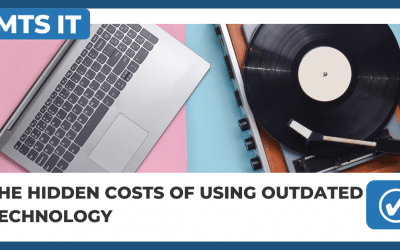The digital world of business is fueled by data and massive quantities of it. It’s estimated that the world will produce more than 180 zettabytes of data by 2025. Much of this data is used by organizations to make informed decisions and optimize processes.
The ability to extract valuable insights from data is now a key enabler of business success, but it hinges on organizations keeping the data safe from all kinds of data loss. For this reason, you need to understand how data loss happens and what they can do to prevent it.
Top Causes of Data Loss
The causes of data loss can be grouped into two broad categories:
Physical Data Loss
This type of data loss happens when a storage device becomes mechanically damaged, stolen, or lost.
The lifetime annualized failure rate for spinning hard drives (HDDs) is 1.39 percent, whereas solid-state disks (SSDs) have an annualized failure rate of 1.22 percent.
While that may not seem like a lot, it means that even a small business with just 100 drives can expect at least one drive to fail each year.
Logical Data Loss
Data loss can also be entirely software-related and caused by accidental deletion, formatting, data corruption, software bugs, transmission failure, malware, and cyber attacks in general.
2022 is the first year when cyber attacks overtook human error as the top cause of data loss.
The ongoing ransomware epidemic is certainly a major factor contributing to the growing number of data loss incidents caused by cyber-attacks.
Business Impact of Data Loss
When an organization loses even a small fraction of its data, its ability to continue doing business can be severely compromised, and it can also expect to take a major financial hit.
Instances of data loss involving just 100 lost or compromised records can cost anywhere from £18,120 to £35,730, depending upon the size of the company and the value of the data.
The financial impact of data loss stems from the cost to replace records, lower productivity due to important data suddenly not being available, brand damage, and, in some cases, even compliance costs, just to name a few factors.
Data Loss Prevention
Given how serious the consequences of even a minor data loss incident can be, data loss prevention should be a top priority for all organizations.
Especially concerned should be organizations that are subject to laws and regulations with data protection elements, such as the Health Insurance Portability Accountability Act (HIPAA), Payment Card Industry (PCI) standards, or the Sarbanes–Oxley Act of 2002.
Know Your Data
Every data loss prevention initiative should begin with a careful review of how the data is stored and used. During the review, the following questions should be answered:
- What types of data do we have?
- Where is the data stored?
- Who is authorized to access it?
- How is the data used and shared?
Make sure to also consider third-party organizations and vendors you partner with and share data with because third-party data breaches have been on the rise in recent years.
Tools like Microsoft Purview Data Loss Prevention can identify and help prevent risky or inappropriate sharing, transfer, or use of sensitive data on endpoints, apps, and services by providing unified data governance and risk management for the entire organization.
Implement a Robust Backup Strategy
Once you have developed a good understanding of your data, you can start implementing a robust backup strategy to ensure that your data is always recoverable regardless of if you encounter physical or logical data loss.
The key is to always have more than one copy of all important data, with each copy stored in a different location to reduce the impact of a single point of failure and ensure recoverability even after devastating natural disasters.
Address Cybersecurity Threats
As we’ve mentioned earlier in this article, cyber-attacks are now the top cause of data loss, so it’s paramount to thoroughly address all major cybersecurity threats as an important piece of any data loss prevention puzzle.
Proactive threat detection and mitigation capabilities can greatly reduce the likelihood of dangerous threats like ransomware and insider attacks causing data loss because they stop them before they have a chance to cause any harm.
Conclusion on Data Loss
The more data organizations create, analyze, and store, the more painful the business consequences of its loss become, making data loss prevention even more essential. While not every physical and logical cause of data loss can always be prevented, data loss itself can.
What it takes is a combination of a robust backup strategy with a bulletproof cybersecurity strategy, and that’s what we at MTS IT can help you design and implement. For more information, schedule a free meeting.



